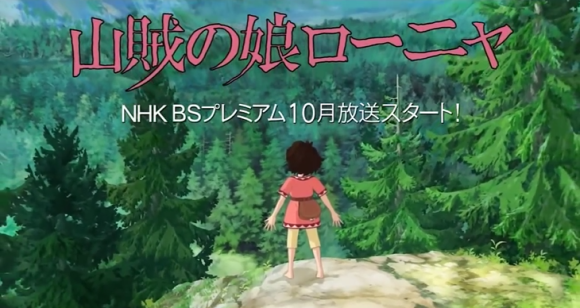
The works of Studio Ghibli are almost universally loved and respected, but there is one interesting criticism detractors lob against Japan’s premier anime production house. Barring the occasional music video or video game art design project, Ghibli’s body of work consists of feature films, all of which have been financial successes (even the widely panned Tales from Earthsea earned more than triple its budget).
Ghibli obviously can’t be blamed for building on its success by putting in the time, money, and, of course, effort to produce movies of such high quality. At the same time, some have wondered how the studio would fare operating under the notoriously tight time and budget constraints of television anime.
Judging from the recently released preview for Ghibli’s first TV series, Ronia the Robber’s Daughter, the transition, not to mention the lead character’s movements, might not be so smooth.
Pippi Longstocking may be Astrid Lindgren’s best known book among English speakers, but Ronia the Robber’s Daughter was also a sizeable hit for the Swedish author. After the children’s novel was published in 1981, it was adapted into a live-action film, musical, and stage production. Next comes an anime version, which is scheduled to premiere in October.
The TV series is a co-production between Studio Ghibli and CG specialist Polygon Pictures, whose work can be seen in anime such as Ghost in the Shell 2: Innocence, The Sky Crawlers, and the currently airing Knights of Sidonia.
Still, it’s the Ghibli name that has people outside anime circles in Japan interested in Ronia, including executives at public broadcaster NHK, the series’ home. To whet viewers’ appetites, NHK recently showed a 30-second clip of the show.
In some ways, Ronia and Ghibli seem like a good fit for each other. With an active, plucky female lead and a bucolic setting, it has the makings of the sort of whimsical yet reverent story Ghibli fans love and expect from the studio.
The art direction doesn’t look half-bad either, with inviting colors and some interesting camera angles.
But while some of the stills give a feeling of that old Ghibli magic, Ronia doesn’t look quite so charming in motion. For starters, there’s an undeniable stiffness to many of her expressions, which is starkly at odds with the atmosphere of energy and freedom the scene is trying to create.
▼ Wheeee…?
Her movements have a shaky, stuttering quality to them that might be acceptable for a real-time cut scene from the early PlayStation 3 era, but are far below what most have come to expect when watching CG movies or TV shows, even when one of the most exalted animation studios in the world isn’t involved.
▼ There’s even one sequence that looks like it’s straight out of a side-scrolling platform game.
Internet commentators in Japan have been similarly unimpressed.
“It doesn’t move like a Ghibli anime.”
“What? Seriously, what?”
“Blocky, jaggy polygons! Ghibli, are you sure this is the sort of thing you want your name associated with? Do you need the cash that badly?”
“Why did they do this all in CG?”
The remark about full CG is telling, as Ghibli isn’t exactly known for its expertise or experience in the field. Presumably, this is why Ronia is being produced in conjunction with Polygon Pictures, but without knowing exactly how the two studios are dividing the workload, it’s hard to say if this is a case of Ghibli stumbling in an unfamiliar medium or Polygon not rising to the occasion of working with its storied partner.
Some might argue the buck stops with Ronia director Goro Miyazaki, son of Studio Ghibli co-founder Hayao Miyazaki. While the younger Miyazaki’s second directorial effort, 2011’s From Up on Poppy Hill, received generally positive reviews, some still haven’t forgiven Goro for the artistic debacle Tales from Earthsea is commonly held to be. “Goro should just hang it up,” spat one commentator. “He’s got no talent.”
In Ronia’s defense, showing such an extensive preview three months before an anime premiers is sort of unusual. Consider, for example, that the first clip of Sailor Moon Crystal wasn’t released until just a month before its first episode.
It’s also worth noting that Ghibli has a new movie hitting theaters soon, two Tokyo museums are holding Ghibli exhibitions this summer, and the classic My Neighbor Totoro was recently shown on TV. It’s possible the timing of the Ronia release had more to do with the cross-promotional potential of flooding the media with Ghibli content and less to do with the people working on the show thinking it’s actually ready for the public’s eyes.
Whatever the reason, the anime’s questionable current quality gives a bitter twist to the clip’s ending sequence. We’re sure the shot of Ronia reaching for the stars is supposed to be representative of a child following her dreams, but it’s also a sober reminder of just how far Ghibli’s first TV anime has to go before it meets fans’ expectations.

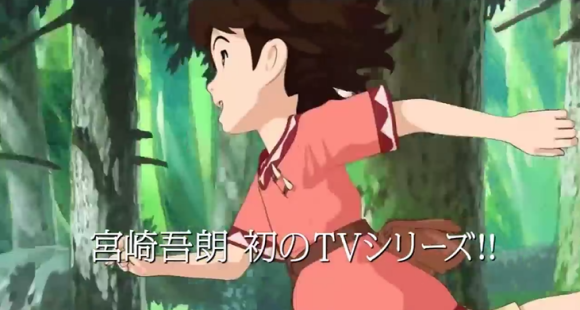
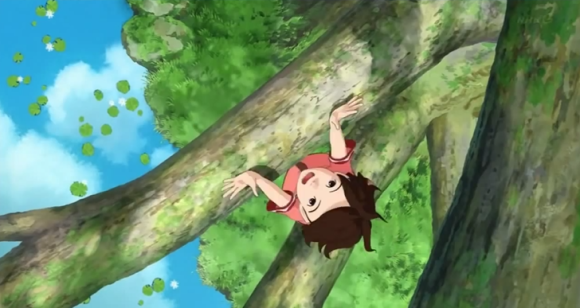
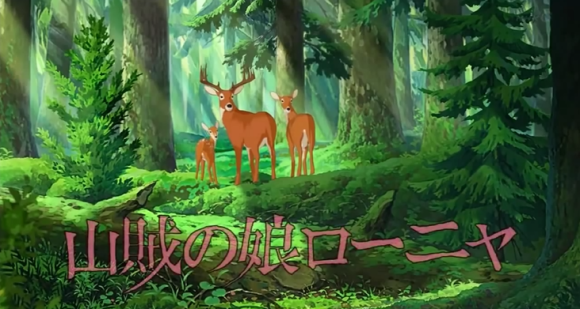
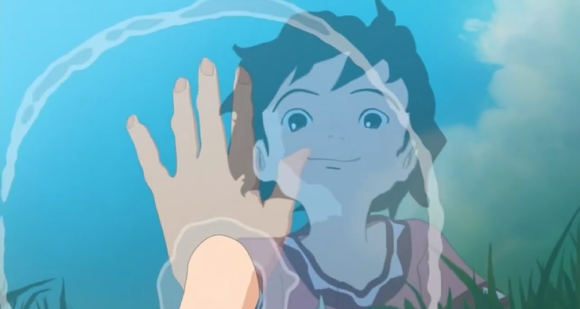
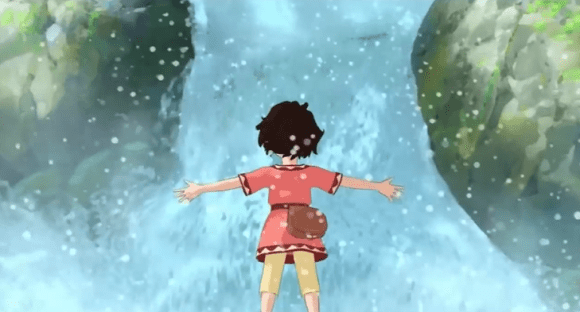
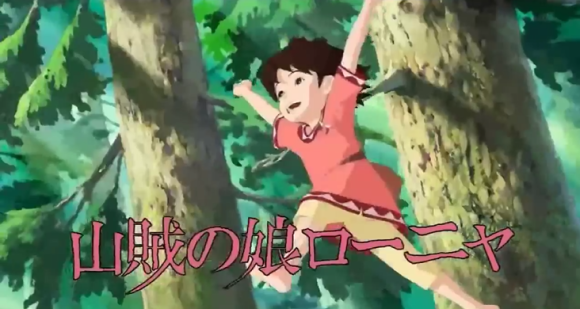
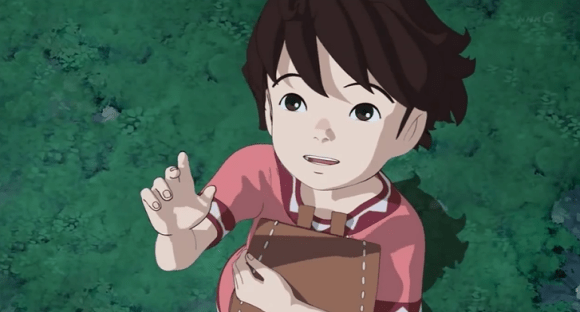
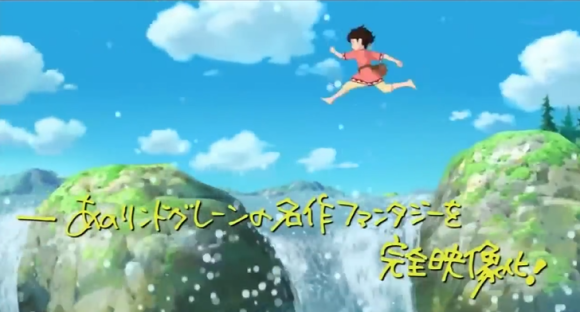
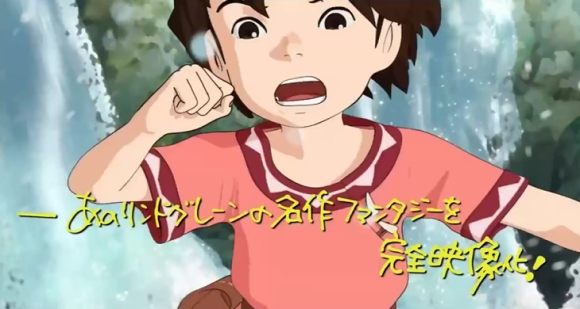
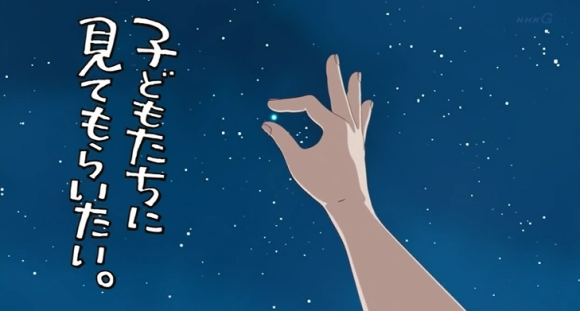
 Studio Ghibli TV show soon to be available on Amazon Prime Video
Studio Ghibli TV show soon to be available on Amazon Prime Video “I didn’t ask the old men for any advice” says director of Studio Ghibli’s first CG anime
“I didn’t ask the old men for any advice” says director of Studio Ghibli’s first CG anime Goro Miyazaki to direct Ronia the Robber’s Daughter TV anime
Goro Miyazaki to direct Ronia the Robber’s Daughter TV anime Studio Ghibli is not Studio Goro – Hayao Miyazaki’s son denies being his father’s successor
Studio Ghibli is not Studio Goro – Hayao Miyazaki’s son denies being his father’s successor The first images of Studio Ghibli’s first-ever CG anime are here!【Photos】
The first images of Studio Ghibli’s first-ever CG anime are here!【Photos】 Foreigner’s request for help in Tokyo makes us sad for the state of society
Foreigner’s request for help in Tokyo makes us sad for the state of society Japanese city loses residents’ personal data, which was on paper being transported on a windy day
Japanese city loses residents’ personal data, which was on paper being transported on a windy day Akihabara pop-up shop sells goods made by Japanese prison inmates
Akihabara pop-up shop sells goods made by Japanese prison inmates Harajuku Station’s beautiful old wooden building is set to return, with a new complex around it
Harajuku Station’s beautiful old wooden building is set to return, with a new complex around it Stunning high-definition promotional short of Hokkaido city leaves jaws hanging【Video】
Stunning high-definition promotional short of Hokkaido city leaves jaws hanging【Video】 Red light district sushi restaurant in Tokyo shows us just how wrong we were about it
Red light district sushi restaurant in Tokyo shows us just how wrong we were about it Japan’s massive matcha parfait weighs 6 kilos, contains hidden surprises for anyone who eats it
Japan’s massive matcha parfait weighs 6 kilos, contains hidden surprises for anyone who eats it Resol Poshtel: Cheap capsule hotel in Tokyo is a hit with overseas visitors, and we find out why
Resol Poshtel: Cheap capsule hotel in Tokyo is a hit with overseas visitors, and we find out why Sakura tree falls on man at Sannenzaka near Kiyomizu temple in Kyoto 【Breaking News】
Sakura tree falls on man at Sannenzaka near Kiyomizu temple in Kyoto 【Breaking News】 Nope, these AREN’T eels — Gunma Prefecture’s ‘Nasu no Kabayaki’ blows our reporter’s mind
Nope, these AREN’T eels — Gunma Prefecture’s ‘Nasu no Kabayaki’ blows our reporter’s mind McDonald’s new Happy Meals offer up cute and practical Sanrio lifestyle goods
McDonald’s new Happy Meals offer up cute and practical Sanrio lifestyle goods Japanese ramen restaurants under pressure from new yen banknotes
Japanese ramen restaurants under pressure from new yen banknotes All-you-can-drink Starbucks and amazing views part of Tokyo’s new 170 meter-high sky lounge
All-you-can-drink Starbucks and amazing views part of Tokyo’s new 170 meter-high sky lounge French Fries Bread in Tokyo’s Shibuya becomes a hit on social media
French Fries Bread in Tokyo’s Shibuya becomes a hit on social media Studio Ghibli releases new action figures featuring Nausicaä of the Valley of the Wind characters
Studio Ghibli releases new action figures featuring Nausicaä of the Valley of the Wind characters New private rooms on Tokaido Shinkansen change the way we travel from Tokyo to Kyoto
New private rooms on Tokaido Shinkansen change the way we travel from Tokyo to Kyoto Studio Ghibli glasses cases let anime characters keep an eye on your spectacles
Studio Ghibli glasses cases let anime characters keep an eye on your spectacles Tokyo Tsukiji fish market site to be redeveloped with 50,000-seat stadium, hotel, shopping center
Tokyo Tsukiji fish market site to be redeveloped with 50,000-seat stadium, hotel, shopping center Beautiful Ghibli sealing wax kits let you create accessories and elegant letter decorations【Pics】
Beautiful Ghibli sealing wax kits let you create accessories and elegant letter decorations【Pics】 Studio Ghibli releases Kiki’s Delivery Service chocolate cake pouches in Japan
Studio Ghibli releases Kiki’s Delivery Service chocolate cake pouches in Japan New definition of “Japanese whiskey” goes into effect to prevent fakes from fooling overseas buyers
New definition of “Japanese whiskey” goes into effect to prevent fakes from fooling overseas buyers Our Japanese reporter visits Costco in the U.S., finds super American and very Japanese things
Our Japanese reporter visits Costco in the U.S., finds super American and very Japanese things Studio Ghibli unveils Mother’s Day gift set that captures the love in My Neighbour Totoro
Studio Ghibli unveils Mother’s Day gift set that captures the love in My Neighbour Totoro New Japanese KitKat flavour stars Sanrio characters, including Hello Kitty
New Japanese KitKat flavour stars Sanrio characters, including Hello Kitty More foreign tourists than ever before in history visited Japan last month
More foreign tourists than ever before in history visited Japan last month New Pokémon cakes let you eat your way through Pikachu and all the Eevee evolutions
New Pokémon cakes let you eat your way through Pikachu and all the Eevee evolutions Sales of Japan’s most convenient train ticket/shopping payment cards suspended indefinitely
Sales of Japan’s most convenient train ticket/shopping payment cards suspended indefinitely Sold-out Studio Ghibli desktop humidifiers are back so Totoro can help you through the dry season
Sold-out Studio Ghibli desktop humidifiers are back so Totoro can help you through the dry season Japanese government to make first change to romanization spelling rules since the 1950s
Japanese government to make first change to romanization spelling rules since the 1950s Ghibli founders Toshio Suzuki and Hayao Miyazaki contribute to Japanese whisky Totoro label design
Ghibli founders Toshio Suzuki and Hayao Miyazaki contribute to Japanese whisky Totoro label design Doraemon found buried at sea as scene from 1993 anime becomes real life【Photos】
Doraemon found buried at sea as scene from 1993 anime becomes real life【Photos】 Tokyo’s most famous Starbucks is closed
Tokyo’s most famous Starbucks is closed One Piece characters’ nationalities revealed, but fans have mixed opinions
One Piece characters’ nationalities revealed, but fans have mixed opinions We asked a Uniqlo employee what four things we should buy and their suggestions didn’t disappoint
We asked a Uniqlo employee what four things we should buy and their suggestions didn’t disappoint Princesses, fruits, and blacksmiths: Study reveals the 30 most unusual family names in Japan
Princesses, fruits, and blacksmiths: Study reveals the 30 most unusual family names in Japan Ghibli Park: Opening date, first photos, and a new promo video produced by Studio Ghibli!
Ghibli Park: Opening date, first photos, and a new promo video produced by Studio Ghibli! Studio Ghibli finishes free-to-use image release with 250 from Nausicaa, Laputa, and more
Studio Ghibli finishes free-to-use image release with 250 from Nausicaa, Laputa, and more Hayao Miyazaki is getting worried about how his new anime is being marketed, Ghibli producer says
Hayao Miyazaki is getting worried about how his new anime is being marketed, Ghibli producer says Was Ghibli right not to market Hayao Miyazaki’s new anime? Opening box office data is in
Was Ghibli right not to market Hayao Miyazaki’s new anime? Opening box office data is in Ghibli Park reveals photo of Elevator Tower entrance, says fans can start using it right now
Ghibli Park reveals photo of Elevator Tower entrance, says fans can start using it right now Studio Ghibli theme park launches official website
Studio Ghibli theme park launches official website Ghibli reveals genre of Hayao Miyazaki’s next anime, and that it’s also working on new CG film
Ghibli reveals genre of Hayao Miyazaki’s next anime, and that it’s also working on new CG film Studio Ghibli’s new anime may be the most expensive Japanese movie ever made, producer says
Studio Ghibli’s new anime may be the most expensive Japanese movie ever made, producer says Spirited Away bathhouse kimono, Princess Mononoke necklace merch coming to Ghibli Park
Spirited Away bathhouse kimono, Princess Mononoke necklace merch coming to Ghibli Park New Ghibli art exhibit lets you step into the studio’s anime posters. Sea of Corruption【Photos】
New Ghibli art exhibit lets you step into the studio’s anime posters. Sea of Corruption【Photos】 Studio Ghibli is partnering with Star Wars’ Lucasfilm, it looks like
Studio Ghibli is partnering with Star Wars’ Lucasfilm, it looks like British newspaper ranks the best Studio Ghibli films and reader passions flare
British newspaper ranks the best Studio Ghibli films and reader passions flare Ghibli Park raises ticket prices, announces Howl area opening date, carousel with ridable Yakul
Ghibli Park raises ticket prices, announces Howl area opening date, carousel with ridable Yakul Even Spirited Away’s Yubaba wants you to wear a mask for coronavirus safety
Even Spirited Away’s Yubaba wants you to wear a mask for coronavirus safety Our take on Studio Ghibli’s newest anime, When Marnie Was There【Impressions】
Our take on Studio Ghibli’s newest anime, When Marnie Was There【Impressions】 Totoro sequel anime, Mei and the Baby Catbus, to screen at Ghibli theme park this fall
Totoro sequel anime, Mei and the Baby Catbus, to screen at Ghibli theme park this fall
Leave a Reply